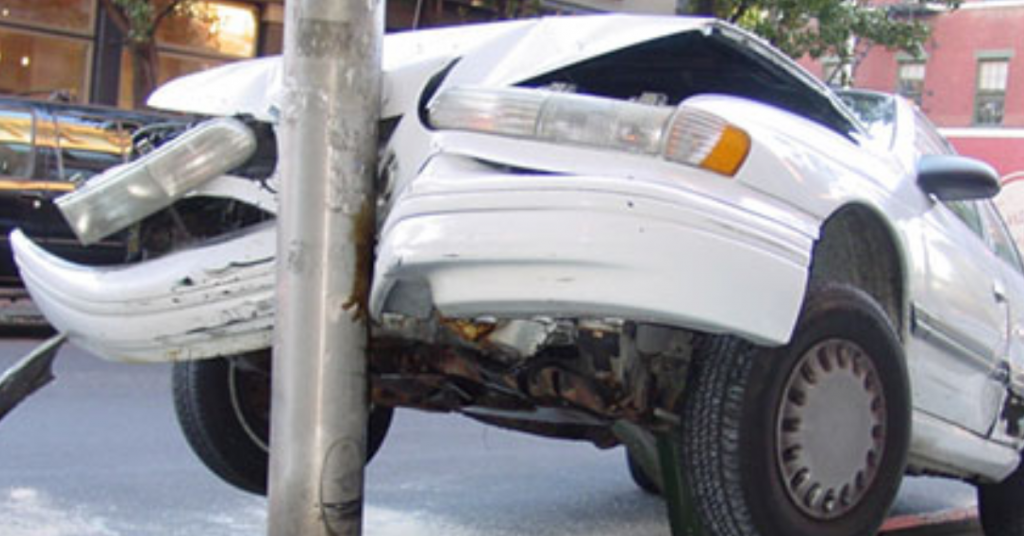
You’re driving home from work, and a deer dashes across the road. Swerving to avoid it, you hop the curb and smash through the neighbor’s fence. Who pays to fix it?
If you’re insured, your insurance company covers the cost, minus your deductible. This is the role of property damage liability insurance—coverage for damage you cause to another person’s property. Liability coverage is the most basic form of car insurance, and all states—except New Hampshire—require it.
KEY TAKEAWAYS
- Most states require car owners to buy property damage liability insurance.
- This coverage pays for damage to someone else’s property, such as a fence, a lamppost, or another driver’s car.
- It doesn’t cover damage to your own vehicle.
- Minimum liability requirements vary by state.
How Does Property Damage Liability Insurance Work?
Property damage liability insurance usually makes up just one part of your car insurance policy. Car insurance policies typically contain the following coverage types:
- Bodily Injury Liability: If you or a covered family member cause injuries to someone else, bodily injury liability coverage helps to pay their medical bills and lost wages.
- Medical Payments or Personal Injury Protection (PIP): If you’re in an accident and you or a passenger are injured, medical payments coverage or PIP will pay for your medical payments, lost wages, and even funeral costs.
- Collision: Collision insurance pays for repairs or replacement costs for the policyholder’s vehicle after an accident.
- Comprehensive: Comprehensive coverage reimburses policyholders for losses from theft or weather damage.
- Uninsured/Underinsured Motorist Coverage: If you’re in an accident with a person who either doesn’t have insurance or doesn’t have enough insurance to cover your damages, uninsured/underinsured motorist coverage will pay for your car repairs and other expenses.
- Property Damage Liability: Property damage liability insurance covers repairs to another person’s car or property, such as a fence or building, when you are at fault in an accident. It also will pay for the removal of debris, such as a damaged tree or signs, that occurs after an accident.
Liability coverage is typically written with three numbers, such as $50,000/$100,000/$50,000. The first number reflects your bodily injury coverage, the second number is your bodily injury coverage per incident limit, and the third number is the property damage liability portion.
Property damage liability doesn’t cover repairs for your own vehicle or your medical expenses, so you’ll need additional coverage to protect yourself, such as collision and comprehensive insurance.
How Much Property Damage Liability Insurance Is Required?
How much property damage liability insurance you’re required to have depends on what state you live in. Below are the minimum requirements for each state and Washington, D.C.:
- Alabama: $25,000
- Alaska: $25,000
- Arizona: $10,000
- Arkansas: $25,000
- California: $5,000
- Colorado: $15,000
- Connecticut: $20,000
- Delaware: $10,000
- District of Columbia: $10,000
- Florida: $10,000
- Georgia: $25,000
- Hawaii: $10,000
- Idaho: $15,000
- Illinois: $20,000
- Indiana: $25,000
- Iowa: $15,000
- Kansas: $25,000
- Kentucky: $25,000
- Louisiana: $25,000
- Maine: $25,000
- Maryland: $15,000
- Massachusetts: $5,000
- Michigan: $10,000
- Minnesota: $10,000
- Mississippi: $25,000
- Missouri: $25,000
- Montana: $20,000
- Nebraska: $25,000
- Nevada: $20,000
- New Hampshire: $25,000
- New Jersey: $5,000
- New Mexico: $10,000
- New York: $10,000
- North Carolina: $25,000
- North Dakota: $25,000
- Ohio: $25,000
- Oklahoma: $25,000
- Oregon: $20,000
- Pennsylvania: $5,000
- Rhode Island: $25,000
- South Carolina: $25,000
- South Dakota: $25,000
- Tennessee: $15,000
- Texas: $25,000
- Utah: $15,000
- Vermont: $10,000
- Virginia: $20,000
- Washington: $10,000
- West Virginia: $25,000
- Wisconsin: $10,000
- Wyoming: $20,000
How Much Does Property Damage Liability Coverage Cost?
Since property damage liability coverage is required by law in most states, you’ll need to purchase coverage from an insurance company. How much your car insurance policy will cost is dependent on your location, vehicle, driving record, age, gender, insurance options, and coverage amounts.
Most drivers find liability-only policies insufficient. To give themselves more protection, 78% of insured drivers add collision coverage, according to the Insurance Information Institute.
Buying Car Insurance
All cars require insurance. At a very least, owners should buy a policy that meets state-minimum bodily injury and property damage liability insurance requirements. For the best rates, shop for quotes from multiple car insurance companies.
To read the full article, click here.